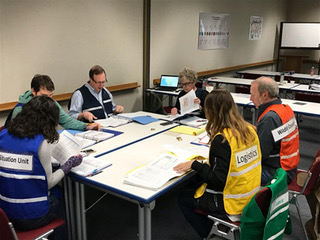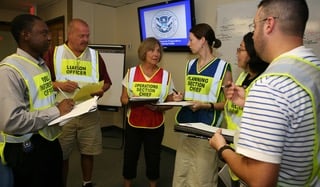This is Part II of the uncomfortable topic on Workplace Violence
Do your incident response plans (e.g. Site Security Plans, Emergency Action Plans, Emergency Response Plans, or other appropriate plans) cover emergency coordination activities?
How is the response coordinated and who maintains decision-making authority when management is not available?
- Is delegation of authority captured in the security plan or any other plan?
- If doors to critical facility components are locked, how does law enforcement gain access?
- Is there a safe location identified for people who are evacuating the immediate area?
What are the specific local law enforcement policies and procedures regarding active shooter incidents?
- What personnel resources do you have available to handle the situation and establish a secure perimeter?
In what manner will command and control of the situation be established in order to comply with the Incident Command System (ICS)?
Do you have sufficient existing security capability to protect staff and the facility in an emergency?
- Is there a way to account for employees (i.e., those who reported to work that day versus those on leave)?
- How is media access to the facility and staging areas managed?
- What access control is or should be in place?
- What are the procedures for safely securing any critical component or operation of the facility?
- What other life safety issues should be considered?
Do you have physical security measures that may be relevant to this scenario?
- What types of perimeter security does your facility have (e.g., fences, doors, gates)?
- What types of vehicle control checkpoints are present (e.g., barriers, driveways, parking lots)?
- Does the public have access to the facility?
How does law enforcement determine that the scene is cleared and there are no additional shooters?
- Once an all clear is given, how is that information communicated to all personnel sheltered-in-place?
For a prolonged incident with a known assailant, law enforcement will need all available information on the assailant as soon as possible. Can that information be provided if law enforcement requests it?

Do current security plans sufficiently address coordination of emergency response personnel?
- What does the site emergency coordinator need to consider (e.g., casualties, evacuation routes, hospitals)?
- Where are pre-determined locations of the command post and staging area(s)?
- Is there a process to assist law enforcement with victim identification?
What are the priorities at your facility or organization post-incident?
- Are these priorities specified in your plans, policies, or procedures?
- How is this communicated internally?
- Are priorities coordinated with township and county emergency management?
- Are priorities coordinated with state or federal agencies?
How will personnel accountability and communication be coordinated?
- Who makes a list of evacuees?
- How do employees leave if the employee parking is a crime scene and cannot be accessed?
- How is reunification handled?
- How is information communicated with personnel and families during the days following the incident?
What mental health services are available for employees and responders?
- What standard operating procedures (SOPs) are in place for assisting visitors that the incident impacted?
- How would available services be communicated?
Does your site have trauma or mental health counseling available to employees?
- Is it provided for visitors?
- Do your plans, policies, and procedures outline this?
How can your facility prepare to handle the public messaging/media in the aftermath of such an occurrence?
How will law enforcement coordinate the handling of the facility as an active crime scene?
- How will law enforcement communicate status with your facility?
- How will your site work with this impediment?
- Will law enforcement be able to estimate the timeframe required for the facility to be considered a crime scene?
How will ramifications of such an event be addressed in regard to business continuity planning or rapid recovery operations?
- Does your facility have a continuity of operations plan in place?
- Who initiates the plan?
- At what point would you consider the facility back to steady-state operations?
What actions would be taken to address security concerns at your facility following the incident?
Is social media being monitored to maintain awareness of information spreading that may not be accurate?
- Who is responsible for this?
Are there plans to handle donations to management after the incident?
- Who is responsible for this task?
Are there plans to handle memorials after the incident? Who is responsible for this task?

